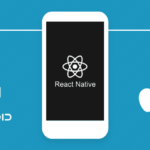Introduction
The world is rapidly shifting toward digital solutions, and philanthropy is no exception. Traditional methods of giving, such as cash donations or in-person charity events, are being replaced by digital social giving platforms that make it easier for individuals and organizations to support causes they care about.
A social giving platform is a digital solution designed to connect donors, charities, and communities, making the donation process more transparent, efficient, and impactful. Whether it’s crowdfunding for a personal cause, supporting non-profits, or contributing to community-driven initiatives, these platforms have revolutionized the way people give.
In this article, we will explore the significance of social giving platforms, their key features, benefits, and how they are shaping the future of philanthropy.
What Is a Social Giving Platform?
A social giving platform is an online system that enables users to donate money, time, or resources to charitable causes, individuals in need, or community projects. These platforms use technology to simplify and enhance the giving experience, making it easy for anyone to contribute from anywhere in the world.
Social giving platforms can take various forms, including:
- Crowdfunding platforms (e.g., GoFundMe, JustGiving)
- Corporate social responsibility (CSR) portals for businesses
- Blockchain-based donation platforms for secure and transparent giving
- Peer-to-peer giving networks that connect donors directly with recipients
- Nonprofit fundraising platforms with integrated tools for campaigns and donor engagement
These platforms harness the power of social networks, allowing users to share campaigns, track donations, and inspire others to give.
Key Features of a Social Giving Platform
A high-quality social giving platform includes a range of features that enhance the donation process and maximize impact. Here are some essential components:
1. User-Friendly Interface
An intuitive and easy-to-navigate platform ensures that donors and fundraisers can easily create campaigns, track progress, and make contributions.
2. Secure Payment Processing
Security is a top priority in online giving. Platforms integrate multiple payment gateways, including credit/debit cards, PayPal, cryptocurrency, and mobile wallets, ensuring secure and seamless transactions.
3. Transparency & Tracking
Social giving platforms provide real-time updates on how donations are being used, ensuring transparency and accountability. Donors can see the impact of their contributions through reports, updates, and success stories.
4. Social Media Integration
To maximize reach, social giving platforms allow users to share campaigns on social media, encouraging community engagement and viral fundraising.
5. Recurring Donations
Many platforms support one-time and recurring donations, enabling consistent support for long-term causes.
6. Peer-to-Peer Fundraising
This feature enables individuals to create personal fundraising pages and encourage their friends and family to contribute.
7. Mobile Accessibility
With the rise of mobile technology, a responsive design or dedicated mobile app ensures that users can donate on the go.
8. Matching Donations
Corporate sponsorship and matching donations encourage larger contributions by allowing businesses to double the impact of individual donations.
9. AI & Data Analytics
Some platforms utilize AI-powered recommendations, donor behavior analysis, and predictive analytics to improve fundraising strategies.
Benefits of Social Giving Platforms
Social giving platforms have transformed charitable giving, offering benefits for donors, organizations, and communities alike.
1. Increased Accessibility
Anyone with an internet connection can participate in philanthropy, regardless of location. This removes barriers and empowers more people to support causes they care about.
2. Transparency & Trust
Donors can track where their money goes, building trust and encouraging long-term engagement with charitable organizations.
3. Faster Fundraising
Compared to traditional methods, digital giving platforms accelerate the donation process, allowing urgent causes to receive support quickly.
4. Community Engagement & Social Impact
Social giving platforms create a sense of community, as people come together to support a shared cause. Social media integration amplifies this effect, making it easier to spread awareness.
5. Empowering Small & Local Initiatives
Not just large non-profits, but small grassroots movements and individuals can leverage these platforms to fund projects, medical treatments, education, and disaster relief.
6. Cost-Effective & Scalable
Nonprofits save on administrative costs by using automated donation processing and AI-driven donor management, making fundraising more scalable and efficient.
7. Corporate Involvement & CSR Enhancement
Companies can integrate giving platforms into their corporate social responsibility (CSR) initiatives, encouraging employees and customers to participate in charitable programs.
The Future of Social Giving Platforms
As technology continues to evolve, the future of social giving platforms looks promising. Here are some key trends shaping the industry:
1. Blockchain & Cryptocurrency Donations
Blockchain technology enhances transparency by providing tamper-proof donation records, ensuring that funds reach their intended beneficiaries. Some platforms now accept cryptocurrency donations, expanding opportunities for global giving.
2. Artificial Intelligence (AI) in Philanthropy
AI-powered platforms can analyze donor behavior, personalize campaigns, and optimize fundraising strategies for greater impact.
3. Gamification & Engagement
Gamification techniques, such as leaderboards, rewards, and challenges, make giving more interactive and engaging.
4. AI Chatbots for Donor Assistance
AI-driven chatbots provide instant responses to donor inquiries, guiding them through the donation process and improving user experience.
5. Virtual & Augmented Reality Fundraising
Immersive experiences through VR and AR allow donors to see real-time impacts of their contributions, making philanthropy more tangible.
6. Decentralized Philanthropy
Decentralized giving models empower direct peer-to-peer contributions, eliminating intermediaries and ensuring that funds reach recipients faster.
How to Choose the Right Social Giving Platform
If you’re considering using or launching a social giving platform, here are some key factors to evaluate:
- Security & Compliance – Ensure the platform follows strict security protocols and complies with data protection regulations.
- Ease of Use – A simple and intuitive interface encourages more participation.
- Payment Options – Multiple payment gateways ensure a seamless donation experience.
- Transparency & Reporting – Look for platforms that provide real-time impact reports and transaction tracking.
- Customization & Scalability – Whether you’re an individual fundraiser or a large organization, the platform should cater to your needs.
- Community Engagement Features – Social sharing, peer-to-peer fundraising, and gamification enhance user involvement.
Conclusion
Social giving platforms are redefining the way philanthropy works. They empower individuals, non-profits, and corporations to connect, engage, and contribute to meaningful causes with ease. By leveraging technology, these platforms make charitable giving more transparent, efficient, and impactful, allowing donors to see the real-world effects of their generosity.
As digital transformation continues to influence philanthropy, adopting a social giving platform is no longer an option but a necessity for organizations looking to make a difference in today’s interconnected world. Whether you’re a donor, a non-profit, or a corporate entity, embracing digital philanthropy can create lasting social change.





